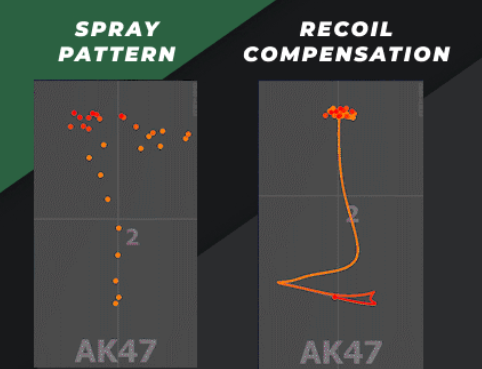Uncovering Secrets: Hookup Detectives
Explore the world of modern relationships and dating with insights from our hookup detectives.
Tapping vs Spraying: A Game of Pixels and Precision
Discover the showdown between tapping and spraying in digital art! Uncover techniques, tips, and tricks to master pixels with precision!
Exploring the Differences: Tapping vs Spraying in Digital Art
Digital art has transformed the way we create and experience visual expressions, and within this realm, techniques such as tapping and spraying have emerged as popular methods for artists. Tapping typically refers to the use of a stylus or finger to make precise marks on a digital canvas, often enabling detailed line work and intricate designs. This technique is favored for its control, allowing artists to achieve crisp outlines and layered textures. In contrast, spraying involves a more fluid approach, simulating spray paint or similar mediums to create broader strokes and gradients. This method appeals to those looking for a more spontaneous and expressive style, making it ideal for layering colors and adding depth to their artwork.
When deciding between tapping and spraying, it's important to consider the intended outcome of your piece. While tapping excels in precision, making it the go-to for illustrative work or detailed designs, spraying can bring a sense of dynamism and movement to compositions. Many artists often combine both techniques in their workflows, allowing them to leverage the benefits of each method. Ultimately, understanding the differences between these techniques can enhance your digital art practice, enabling you to choose the right approach for your creative vision.

Counter-Strike is a popular multiplayer first-person shooter that has captivated gamers for years. Players can choose to fight as terrorists or counter-terrorists in various game modes. For those looking to enhance their gameplay experience, checking out shroud cs2 settings can provide valuable insights into optimized configurations.
Which Technique Reigns Supreme? A Deep Dive into Tapping vs Spraying
When it comes to applying agricultural chemicals, the debate between tapping and spraying techniques is more relevant than ever. Tapping, which involves localized application directly onto the targeted areas, minimizes chemical usage and reduces the risk of drift. This method not only enhances efficiency but also promotes sustainability by lessening the environmental impact. In contrast, spraying covers larger areas and ensures even distribution, making it ideal for applications where uniformity is crucial.
While both techniques have their advantages, the choice ultimately hinges on specific agricultural needs. For instance, tapping is often preferred for its precision and lower rates of chemical application, making it suitable for sensitive crops or in regions with strict environmental regulations. Conversely, spraying prevails when rapid coverage is necessary, especially in larger agricultural settings where time constraints are a factor. As we explore these methods further, the importance of understanding each technique's nuances becomes critical for optimizing agricultural productivity.
The Precision Debate: When to Use Tapping vs Spraying in Your Creations
When it comes to achieving the best results in your projects, the choice between tapping and spraying techniques can significantly influence the quality of your creations. Tapping, often regarded for its precision and control, allows artisans to apply materials with a level of detail that can elevate a piece. This method is especially beneficial when working with intricate designs or delicate surfaces, as it enables the creator to focus on specific areas with a steady hand. In contrast, spraying is often favored for its speed and efficiency, making it an ideal choice for larger projects or when a uniform finish is desired. Each method has its unique advantages, tailored to varying artistic needs.
In determining whether to use tapping or spraying, consider the nature of your project and the desired outcome. Tapping is well-suited for applications where precision is paramount, such as when working on detailed craftwork or complex graphic designs. On the other hand, if your goal is to cover a larger area quickly while maintaining a consistent appearance, then spraying might be the way to go. In summary, understanding the context of your work is crucial: tapping offers meticulous control, while spraying provides speed and uniformity—both essential to achieving outstanding results.